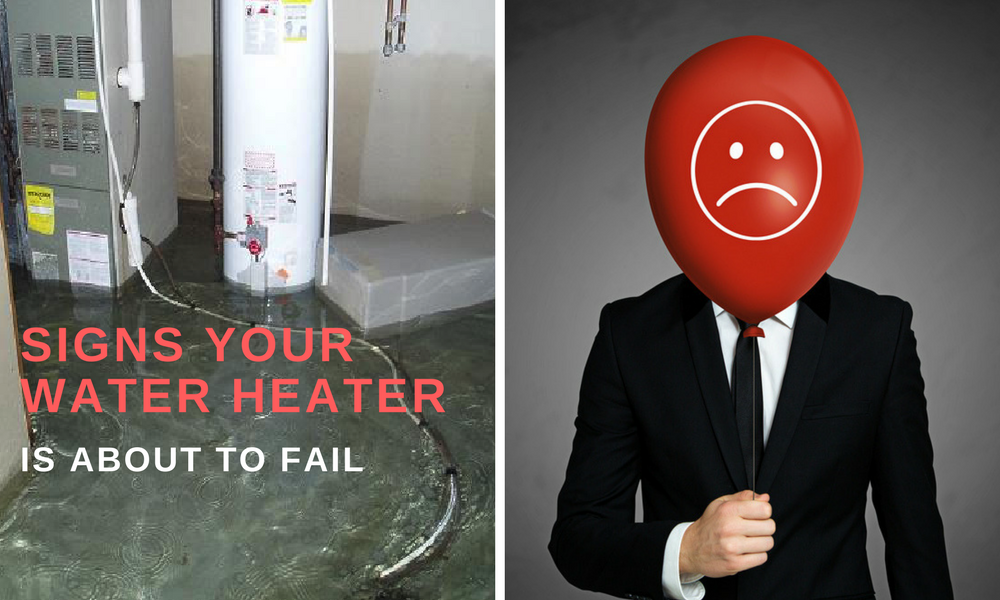Staying warm indoors has been a big concern for centuries. Initially, people used wood-burning appliances like a fireplace or cast iron stove to heat their homes. With the dawn of the Industrial Revolution in the late 1700s and early 1800s, things gradually started to change.
While wood-burning appliances were still very popular, the advances in production methods, science, and technology were slowly paving the way for new home heating options. One of the first new options was the radiator.
Radiators circulated heated water through a series of closely wound pipes that released heat into the room. The water was then returned back to the heat source, where the water was reheated and then recirculated back into the system. Typically, in the 1800s, the heat source was wood or coal burned underneath a water tank to heat the water, similar to how tank-type water heaters work today.

Another new option was the Bunsen burner. This burner burned natural gas, propane, or oil. It was able to release heat without the risk of ash or soot. However, the burner did release various gases that were not safe to breathe, so the use of Bunsen burners for heat was rather limited. Yet, it could be safely used to heat the water for radiators.
The Introduction of Coal Furnaces
People also started using coal furnaces to heat their homes. The furnace was vented outside, much like a fireplace, to release soot and ash. The heat was directed into the home from the furnace using ductwork in the floor directly above the furnace.
Yet, forcing the heat through the ductwork was still an issue, as electricity was still not readily available. As such, the use of coal furnaces for heating homes was not that widespread and people continued to rely upon other methods to stay warm.
Enter Electricity
The advances in electricity in the late 1800s started to pave the way for more advancements in heating. In the early 1900s, the first heating elements were invented that converted electricity into heat. These heating elements would become the first electric heaters and, eventually, electric furnaces.
Another advance thanks to electricity was the invention of electric blower motors. The blower motors could be installed onto coal furnaces to force the hot air out of the ductwork and into the rooms of the home. This made it possible to not only heat lower floors but upper floors too.
By the 1940s, homes were purchasing and installing coal wall furnaces and retrofitting their homes with ductwork. The first forced-air coal furnace had been invented some 20 years earlier but had not been perfected until the mid-1920s.

Manually Operated Furnaces
Coal shortages during WWI paved the way for natural gas, propane, and oil furnaces to be invented. These early furnaces were all manually operated. This meant that someone would have to go turn the furnace on, adjust the dampers, and open and close the vents to direct heated air from the furnace into the home.
Once the home was sufficiently heated, someone would have to go turn the furnace off. With coal furnaces, the coal could be left to smolder and then be stoked, with more added to the furnace to get the fire burning again.
Thermostats Are Introduced
Furnace development changed again after the invention of the first electric thermostat in the late 1800s. However, the first thermostat was nothing like today’s thermostats. All it did was ring a bell to let someone know they needed to adjust the damper on the furnace!
Advances in thermostats also started to occur during WWI. With coal shortages, people needed a way to control when the coal burned. The first residential thermostat was a wind-up electric model that lit the coal and allowed it to burn until the clock ran down. Then it would close the damper so the coal would go out.
The first thermostats for oil furnaces helped advance the sales of oil furnaces in the 1920s. Propane and natural gas furnaces also saw advancements, thanks to new thermostats. Yet, major progress was not made until much later, as homes were not piped with natural gas or propane lines just yet.
Rural and Urban Heating Styles
By the 1950s, homes were being heated using coal, oil, propane, or natural gas. Coal, oil, and propane were all popular options in rural areas where homeowners did not have access to natural gas lines through a gas company. In cities, natural gas heating was growing in popularity because it meant homeowners no longer needed to have a storage tank for oil or propane or a storage area in the basement for coal.
Central Heating and Cooling and Higher Efficiencies
Up until the 1970s, furnaces could only heat the home. The use of central heating and cooling systems was not yet popular. Places in the south, including parts of Texas, did not even have furnaces because the weather never got cold enough to justify installing a furnace. Rather, people in warmer climates relied on wood-burning stoves and fireplaces to heat their homes.
Then, in the late 1970s after the oil crisis, the federal government started to demand that furnaces provide higher efficiency ratings as a means to help conserve oil, propane, and natural gas. This led to the invention of multi-speed electric blower motors that did not require the use of a fan belt. The motor was connected directly to the fan.
People were not too happy about the change, at first, because the new furnaces were loud and noisy. Yet, they gradually adjusted to the added noise the newer blower motors made when the furnace ran.
Around the 1970s is also when air conditioning systems started to become more popular and in demand. The increase in demand resulted in the first central heating and cooling systems to be created. These systems shared the same blower motor and ductwork, much like today’s central split systems.
Computer-Based and Digitized Systems and Other New Advances
As computer-based technologies advanced in the 1980s, they were gradually adopted for use in heating and cooling systems. By the 1990s, the first digital thermostats started to appear on the market, which helped improve the efficiency of heating and cooling systems.

A new type of furnace was also invented that allowed for it to be mounted on an outside wall, using PVC pipes. This new furnace addressed the noise issue homeowners disliked. Other advances in technologies led to even more efficient furnaces and air conditions systems, including:
- Multi-Stage Functioning: Furnaces and AC systems started to offer multiple stages of functioning based on the demand. When a little amount of heat or cool air is needed, the system operates at a lower level and at a higher level when a large amount of heat or cool air is required.
- Variable-Speed Motors: To accompany multi-stage functioning, variable-speed motors were added. The speed of the motors changes based on how the system is operating to help deliver the right mix of heated or cooled air into the home while also helping reduce the appearance of cold and hot spots.
- Delayed Started Blower Motors: These blower motors do not turn on right away when the furnace or AC kicks on. Instead, they wait a short period to allow the heated or cooled air to enter the ductwork. This way, you are not hit with a blast of cold or hot air coming out of the air vents.
- Smart Thermostats: These thermostats are an improvement over the digital ones from the 1990s. They offer complete control of the heating and cooling system using your smartphone or tablet.
- Energy-Efficient Furnaces: Energy efficiency in furnaces has continued to improve and increase since the 1970s when the federal government started to demand better efficiency. A furnace from the later 1970s or early 1980s only has an efficiency of around 60 to 65% compared to 97-98% efficiency in a new furnace today!
- Ductless Heating and Cooling: Homes no longer need ducts to stay warm or cold. Ductless systems provide even greater flexibility in deciding what temperature to keep each room in the home.
As you can see, furnaces have come a long way over the past 200+ years. If you are looking to save money on your heating costs this winter, it may be time for new furnace installation in Houston from MET Plumbing & Air Conditioning.
If your furnace is more than 15 years old, it is highly recommended you consider investing in a new energy-efficient model. If it is less than 15 years old, it is still a good idea to schedule heater and furnace repair and maintenance service.
Regular maintenance ensures your furnace is operating optimally and as efficiently as it can. To schedule heating services in Houston and Katy, please feel free to call MET Plumbing & Air Conditioning at 281-994-6698 today!
Our heating and cooling experts are happy to examine your current system and offer sound advice to help you decide if now is the right time for new furnace installation in Houston.
The post How Have Furnaces Changed Over the Years? appeared first on Met Plumbing.
 Furnace efficiency is a hot topic these days, particularly because homeowners are looking for any and every DIY solution to problems with their heating bills. Well, you might not be able to build a new furnace from scratch but you’ll definitely be able to do a few things that help with the efficiency of your furnace system. That’s where we’re trying to help.
Furnace efficiency is a hot topic these days, particularly because homeowners are looking for any and every DIY solution to problems with their heating bills. Well, you might not be able to build a new furnace from scratch but you’ll definitely be able to do a few things that help with the efficiency of your furnace system. That’s where we’re trying to help. Unfortunately, the water that runs through our taps is quite susceptible to contaminants, and although many of these contaminants aren’t necessarily dangerous, they can have quite a big impact on overall taste and quality. Of course, then, it’s no wonder why so many homeowners choose to install water filtration systems.
Unfortunately, the water that runs through our taps is quite susceptible to contaminants, and although many of these contaminants aren’t necessarily dangerous, they can have quite a big impact on overall taste and quality. Of course, then, it’s no wonder why so many homeowners choose to install water filtration systems. Plumbing repairs are something nobody wants to deal with. And yet, many homeowners are damaging their plumbing on a daily basis, thereby dooming themselves to eventual problems. Of course, most of them don’t realize that what they’re doing is detrimental to their plumbing—and you might be making the exact same mistakes. Keep reading to find out the common mistakes people make that damages their plumbing systems that might require
Plumbing repairs are something nobody wants to deal with. And yet, many homeowners are damaging their plumbing on a daily basis, thereby dooming themselves to eventual problems. Of course, most of them don’t realize that what they’re doing is detrimental to their plumbing—and you might be making the exact same mistakes. Keep reading to find out the common mistakes people make that damages their plumbing systems that might require  While the name might make you think drain cleaners are great for your pipes, they’re really not. Most drain cleaners do more harm than good; they can corrode your pipes, which will lead to more severe clogs down the road. The next time you get a clog, try using a drain-cleaning tool or plunger instead, and get rid of that damaging drain cleaner.
While the name might make you think drain cleaners are great for your pipes, they’re really not. Most drain cleaners do more harm than good; they can corrode your pipes, which will lead to more severe clogs down the road. The next time you get a clog, try using a drain-cleaning tool or plunger instead, and get rid of that damaging drain cleaner.





 Nobody wants to go through the trouble of replacing an old water heater. It’s a big project and costly, so homeowners will often settle for poor performance from an ancient water heater and high heating costs rather than take the step of calling a professional to install a new one.
Nobody wants to go through the trouble of replacing an old water heater. It’s a big project and costly, so homeowners will often settle for poor performance from an ancient water heater and high heating costs rather than take the step of calling a professional to install a new one. At some point, nearly every homeowner will have a plumbing emergency. The good news is that when you’re prepared, the situation doesn’t have to get out of control. Getting professional plumbing repair service fast is always your best defense against water damage and other problems related to bad plumbing. Knowing when to call for
At some point, nearly every homeowner will have a plumbing emergency. The good news is that when you’re prepared, the situation doesn’t have to get out of control. Getting professional plumbing repair service fast is always your best defense against water damage and other problems related to bad plumbing. Knowing when to call for  While you wait for the plumber to arrive, you can temporary fix small leaks. This can be done using duct tape, plumber’s tape, or plumber’s putty. Most people don’t have plumber’s putty on hand, but it’s a great item to have in your emergency toolbox.
While you wait for the plumber to arrive, you can temporary fix small leaks. This can be done using duct tape, plumber’s tape, or plumber’s putty. Most people don’t have plumber’s putty on hand, but it’s a great item to have in your emergency toolbox.